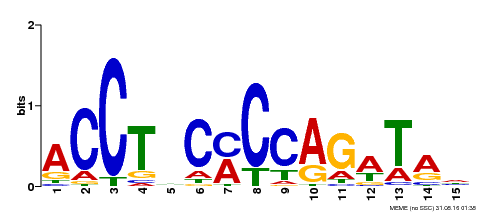 |
PlantRegMap/PlantTFDB v5.0
Plant Transcription
Factor Database
|
| Home TFext BLAST Prediction Download Help About Links PlantRegMap |
Transcription Factor Information
| Basic Information? help Back to Top | |||||||||
|---|---|---|---|---|---|---|---|---|---|
| TF ID | kfl00433_0010 | ||||||||
| Organism | |||||||||
| Taxonomic ID | |||||||||
| Taxonomic Lineage |
cellular organisms; Eukaryota; Viridiplantae; Streptophyta; Klebsormidiophyceae; Klebsormidiales; Klebsormidiaceae; Klebsormidium
|
||||||||
| Family | C2H2 | ||||||||
| Protein Properties | Length: 532aa MW: 57180.4 Da PI: 7.955 | ||||||||
| Description | C2H2 family protein | ||||||||
| Gene Model |
|
||||||||
| Signature Domain? help Back to Top | |||||||
|---|---|---|---|---|---|---|---|
| No. | Domain | Score | E-value | Start | End | HMM Start | HMM End |
| 1 | zf-C2H2 | 19.9 | 2e-06 | 287 | 308 | 2 | 23 |
EETTTTEEESSHHHHHHHHHHT CS
zf-C2H2 2 kCpdCgksFsrksnLkrHirtH 23
C++C+k F+r nL+ H+r H
kfl00433_0010 287 FCEICNKGFKRDANLRMHMRGH 308
6*******************98 PP
| |||||||
| Protein Features ? help Back to Top | ||||||
|---|---|---|---|---|---|---|
| Database | Entry ID | E-value | Start | End | InterPro ID | Description |
| Gene3D | G3DSA:3.30.160.60 | 4.0E-5 | 283 | 308 | IPR013087 | Zinc finger C2H2-type/integrase DNA-binding domain |
| SuperFamily | SSF57667 | 2.21E-5 | 283 | 309 | No hit | No description |
| PROSITE profile | PS50157 | 11.011 | 286 | 313 | IPR007087 | Zinc finger, C2H2 |
| SMART | SM00355 | 0.0045 | 286 | 308 | IPR015880 | Zinc finger, C2H2-like |
| Pfam | PF12874 | 1.4E-5 | 287 | 308 | No hit | No description |
| PROSITE pattern | PS00028 | 0 | 288 | 308 | IPR007087 | Zinc finger, C2H2 |
| SMART | SM00355 | 100 | 335 | 368 | IPR015880 | Zinc finger, C2H2-like |
| SMART | SM00355 | 23 | 373 | 395 | IPR015880 | Zinc finger, C2H2-like |
| Gene Ontology ? help Back to Top | ||||||
|---|---|---|---|---|---|---|
| GO Term | GO Category | GO Description | ||||
| GO:0006355 | Biological Process | regulation of transcription, DNA-templated | ||||
| GO:0010044 | Biological Process | response to aluminum ion | ||||
| GO:0010447 | Biological Process | response to acidic pH | ||||
| GO:0005634 | Cellular Component | nucleus | ||||
| GO:0003676 | Molecular Function | nucleic acid binding | ||||
| GO:0003700 | Molecular Function | transcription factor activity, sequence-specific DNA binding | ||||
| GO:0046872 | Molecular Function | metal ion binding | ||||
| Sequence ? help Back to Top |
|---|
| Protein Sequence Length: 532 aa Download sequence Send to blast |
MSFQHLHDKS GFFGGEMASN PGPQSFLDLA GVPLAGRDPY QSASRGLHDQ LSHARLDFRP 60 QLDRQPLGQD HGFQAAHNLS SSQGLMLGNL QLPGGGMSSH AALAAFLQAG LAGGPLAQDT 120 TGGGEAMLFP SSLLSTLNQL QKNIATLQAL IPLLNQHGTS RSQQEAATIG VANVLQASMA 180 QLASAAAGLL PATQPLPGDR LNSARGTAGS AALNTTSANI SSFGLPDGNS VRNVGGELTQ 240 QASDKEEEQG GVGSYKEDYD SEENLPEGSY DVMELDAMEI LAEHTHFCEI CNKGFKRDAN 300 LRMHMRGHGD QYKTAAALAK PDKPQESGTL RPKRFSCPHV GCKRNRKHSK FQPLKTMLCV 360 KNHYRRSHCP KVLSCSKCGA KKFSVVADLK THEKHCGREK WTCSCKTTFS RKDKLLGHLN 420 LFKGHSPVLP SPTKPEPEIG GTGPALPTSQ PSATSLAVAE ALGLDLQRPS EEQPRLVGSF 480 DTPNLLSSFY GSHELPLGGL EGQENMGLAF QLKEENQSLN FWDRREQLPG KR |
| Functional Description ? help Back to Top | ||||||
|---|---|---|---|---|---|---|
| Source | Description | |||||
| UniProt | Probable transcription factor. Together with STOP2, plays a critical role in tolerance to major stress factors in acid soils such as proton H(+) and aluminum ion Al(3+). Required for the expression of genes in response to acidic stress (e.g. ALMT1 and MATE), and Al-activated citrate exudation. {ECO:0000269|PubMed:17535918, ECO:0000269|PubMed:18826429, ECO:0000269|PubMed:19321711, ECO:0000269|PubMed:23935008}. | |||||
| Binding Motif ? help Back to Top | |||
|---|---|---|---|
| Motif ID | Method | Source | Motif file |
| MP00196 | ampDAP | Transfer from AT1G34370 | Download |

| |||
| Regulation -- Description ? help Back to Top | ||||||
|---|---|---|---|---|---|---|
| Source | Description | |||||
| UniProt | INDUCTION: By shock H(+) and Al(3+) treatments. {ECO:0000269|PubMed:17535918}. | |||||
| Annotation -- Protein ? help Back to Top | |||||||
|---|---|---|---|---|---|---|---|
| Source | Hit ID | E-value | Description | ||||
| Refseq | XP_023535287.1 | 7e-95 | protein SENSITIVE TO PROTON RHIZOTOXICITY 1-like isoform X2 | ||||
| Refseq | XP_027346302.1 | 8e-95 | protein SENSITIVE TO PROTON RHIZOTOXICITY 1-like isoform X2 | ||||
| Swissprot | Q9C8N5 | 1e-92 | STOP1_ARATH; Protein SENSITIVE TO PROTON RHIZOTOXICITY 1 | ||||
| TrEMBL | A0A1Y1IBZ1 | 0.0 | A0A1Y1IBZ1_KLENI; C2H2 zinc finger protein | ||||
| Orthologous Group ? help Back to Top | |||
|---|---|---|---|
| Lineage | Orthologous Group ID | Taxa Number | Gene Number |
| Representative plant | OGRP830 | 16 | 63 |
| Best hit in Arabidopsis thaliana ? help Back to Top | ||||||
|---|---|---|---|---|---|---|
| Hit ID | E-value | Description | ||||
| AT1G34370.2 | 4e-90 | C2H2 family protein | ||||



